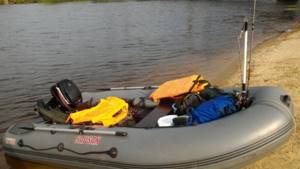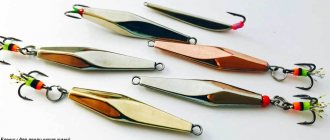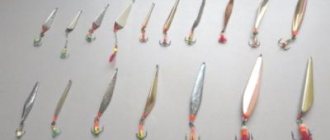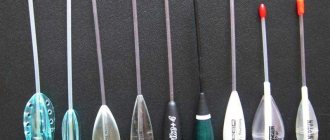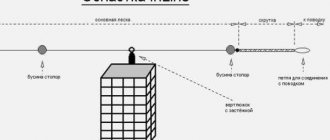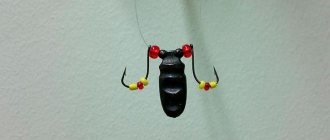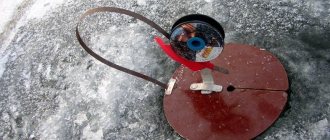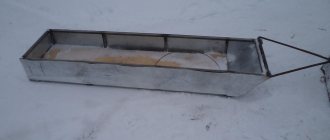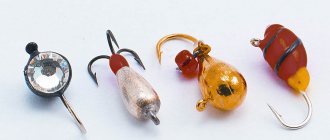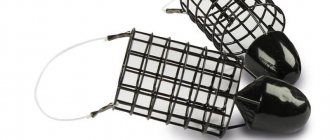It is unlikely that there is at least one fisherman today who has not heard anything about Rastmaster. Spinners owe the appearance of Kastmaster to the American fishing enthusiast Art Lavalle; back in the 50s of the last century, he put a spinner on stream through his. What makes it so unique and inimitable is the correctly selected thickness, length, width, alloy and other details. It is the accuracy of the parameters that is the key to popularity and effectiveness. The Kastmaster is good for catching asp, pike perch, large perch, pike and even catfish.
Description of the bait
The original Kastmaster is a cylindrical blank with a bevel cut. The main feature of castmasters are the edges that form sharp angles with the base. The bait was initially produced in five versions: 7, 14, 21, 28 and 35 gr. Now you can buy small sizes of 2.5 and 3.5 grams in fish stores. and more weighty. It is equipped with one winding ring and a tee. Its size must be equal to its width.
Tie the spoon to the fishing line with a tight knot. You can put an unequipped leash (20–30 cm), which is attached to the bait loop to loop.
For fishing with Kastmaster, any rods with a length of 2–3.2 m and a top weight of 35 or 40 g are suitable. For ultra-long casting, it is better to use spinning reels and monofilament lines. The latter should be strong and soft.
Progress does not stand still and in stores you can find spoons for a wide variety of fish, there is a castmaster for pike and perch, asp and pike perch, etc.
Lures come in different colors, but experienced anglers prefer to buy silver ones.
Fish such as pike and perch can be caught well with spoons of any color. But many spinning anglers believe: the brighter the sun shines, the darker the bait should be used.
Gallery: Kastmaster spinners (25 photos)
Features of the Kastmaster spinner game
Using bait, you can easily catch a wide variety of predatory fish not only in fresh waters, but also in the sea. Because of its structure, it is able to imitate fry, which is food for any predator. The castmaster spinner is characterized by a fairly average intensity of play. If the reeling is fast, despite its weight, the bait is able to quickly come to the surface. You can fish with it even at a depth of 10 meters.
Castmaster wiring
The casting angle depends on the direction and strength of the wind. If it is passing, then the throw has a small amplitude. If it blows in your face, it is more harsh.
There are several types of wiring for castmasters:
- Uniform . It is enough to cast the bait, and over time turn the reel at one speed. Good for a beginner.
- Torn . This is a combination of several transactions into one.
- With the fall . This wiring means that the Kastmaster is lowered to the bottom, and the line is in a taut position and the bite is determined by the tip. But many people prefer to cast the spoon at a distance of a couple of meters from the bottom, hoping to attract fish. Best suited for depths between 2 and 4 meters.
- With the rise . Characterized by a bite when rising. Determined by the tip or given to the hand. It looks like a kind of spinner jumping in the water.
- With a jerk . Jerks are performed during even movements to provoke the fish to bite.
When fishing with a Kastmaster, you can use any fishing technique and catch completely different fish. Mainly, of course, it is used for catching asp, but other fish such as pike, perch, and pike perch are also successfully caught. In order to catch a perch, uniform wiring is suitable, and stepped wiring at the bottom. Pike can be caught well with a slow retrieve, and in deep places with a stepped retrieve, but it is practically impossible to catch it with a castmaster in shallow water. And in winter, pike perch are caught from the ice using it.
Fishing tactics with castmasters
Any angler looking for a good catch knows that it depends on many factors. And everyone has their own methods of fishing with Kastmaster.
There are several tactics:
- Choice of wiring or alternation method. It is recommended to use uniform wiring first, then rise or fall. This means that each cast has a different retrieve. And no more than 6 casts in one place.
- Selection of positions . Fishing with castmaster occurs near pits and rivers. Suitable for fishing in deep water areas and rifts. You should take heavier spinners weighing from 20 grams. The cast must be long.
- Weight gain method . Sometimes you have to use bait of different sizes to attract fish. It is best to start with small ones and change the weight depending on the catch.
- Search principle . Any fisherman should have binoculars with him. With its help, you can see how things are going with fishing at your neighbors or on the other side. And it’s also good because it makes it easy to determine the location of a seagull that feeds on fry. This means there is a predatory fish nearby.
What tactics to choose is up to everyone to decide for themselves. Some anglers manage to use several tactics in one day.
Original Castmaster
Many companies try to fake a spoon, but this does not guarantee that it is as catchy. Therefore, in the store you should carefully inspect the product you are purchasing.
The winding rings on the original are cut diagonally and inward. Hooks must be well sharpened and distinguished from fakes by a special coating. The packaging is not wrinkled, without errors and well taped. The original is plated and polished. And the prices for real Kastmaster spinners are much higher than for fake ones.
Making your own Kastmaster bait
Many fishermen use it in winter. If you don’t have extra money to buy the original, and you don’t want to buy a fake of poor quality, you can make the bait yourself.
The process itself is not particularly complicated and it is much easier than making the same wobbler.
Currently, there are three ways to make castmaster with your own hands - these are:
- Cutting out a spinner from a twig.
- Casting in a special mold.
- Pattern casting.
For the first method, any metal rods are suitable. Their diameter should be from 10 to 20 mm. The difficulty of making it yourself is to ensure that the cutting angle is maintained. Therefore, the sawing process must be carried out using a grinder in a vice, strictly observing the proportions. And then polish the resulting product with sandpaper. Then drill the holes and the bait is ready.
The second method of making it yourself is based on casting. To do this, you need to take a metal tube made of tin or lead and cut it to the required size. Then secure it to the plate using clamps. The difficulty lies in the fact that it is important to achieve the tightest possible fit of the form. Moreover, it should be located at an angle so that the upper bevel takes the correct position. Then they are treated with abrasives, holes are drilled and painted.
The last method involves using a proprietary Acme template. Gypsum is poured into a container, and a spoon is placed in the center. After it dries, the bait is removed, and passages are cut for pouring the metal. Then the resulting product is polished.
If castmaster is made for perch, it should be painted with gold or blue-red colors. Making your own bait does not require much effort or skill. The main thing is to comply with branded parameters: thickness, length, weight, etc.
The Kastmaster spinner can rightfully be considered a universal bait, because it doesn’t matter if you catch pike, perch, pike perch or other predatory fish and this happens in winter or summer, there will definitely be a good catch. And every fisherman should have several different spinners from this company in his collection. It doesn’t matter whether it was bought in a store or made with your own hands.
34fish.ru
Making at home
If a person does not have free financial resources, but really wants to use a castmaster for pike perch (who doesn’t like tasty fish soup), then you should try to make such a lure with your own hands.
First, you should search the Internet for product drawings. The geometric shape of this bait is not characterized by any increased complexity, but, of course, it is better to make it with good accuracy. After all, this is the only way to ensure a unique game for the spinner.
There are three ways to make a castmaster lure at home:
- Use gypsum as the main material;
- Apply hot casting technique using a special mold;
- From ordinary steel rod.
Each of these methods can fairly closely convey the shape of the original castmaster.
Note!
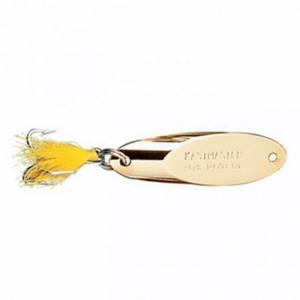
Also, the use of fast retrieval will help the fisherman, even with the small size of the bait itself, quickly return it to the shore, thereby, during hooking, the risk of missing the prey will be extremely small.
To make a Kastmaster with your own hands, you will have to look for drawings. The geometric shape of such a spinner is not particularly complex, although it should be manufactured with special precision, which will provide it with a characteristic game. Therefore, attempts to make such a spinner yourself, at home, will not be fruitless. There are three common ways to make a Castmaster:
- using rolled metal products;
- casting in plaster mold;
- hot casting using a special mold.
We suggest you read: How to make a leash for a fishing rod
In order to make a Castmaster spinner in this way, you will need a thick metal rod with a diameter of twelve to twenty-four millimeters. The workpiece material can be stainless steel, copper or brass. The rod should be secured in a vice, and then cut at an angle of seventeen degrees.
Now the workpiece should be carefully processed using a file and sandpaper to smooth out all the corners and irregularities. After this, you need to make two holes in the spoon: front and back. Winding rings will be fixed in them, on one of which a tee is hung. The last stage of work is painting. The lure must be coated with waterproof paint. The result will be a homemade Castmaster, very close in its properties to the factory one.
Plaster casting
To make a Castmaster using the second method, a completely different sequence of actions will be required. This path will require much less labor, but will still allow you to get a spinner in shape that is closest to the original one. To work, you will need a Kastmaster store-bought spoon and a not very voluminous vessel into which you will need to pour liquid gypsum.
When the gypsum solution has hardened, you can carefully remove the top layer of the plaster mold and remove the original spoon. Then you need to connect both parts of the mold again and carefully drill two holes: one for pouring metal, and the second for air outlet. Further actions will be the same as with the first method. In the cooled spoon, the winding rings and hook are fixed, and the body is covered with paint.
Hot casting
To make a spinner using the third method, casting is also used, but the shape of the casting will no longer be plaster, but metal. A piece of steel pipe with a diameter of about one and a half centimeters will come in handy here. From it you need to cut a blank for casting, in appearance as close as possible to the shape of the spoon. The resulting workpiece is then attached to a metal plate using steel wire. It is extremely important to ensure a tight, gap-free fit of the plate to the workpiece cut from the pipe.
Description of the bait
The original castmaster from the American manufacturer Acme is an oblique cut of a cylindrical solid piece at a certain angle.
The spinner has two holes. One is designed to be attached to a fishing line. Usually the kastmaster comes with a winding ring, which many spinners remove immediately after purchase. This way you can avoid accidental loss of the bait, and also slightly improve the already excellent aerodynamic properties. A tee is installed in the second hole through the winding ring. It is also customary to immediately remove it and replace it with a better and sharper one.
The classic color of the spinner is silver. Some manufacturers produce baits painted in various colors. You can often see baits in black and blue colors. There are options using holographic stickers. Which castmaster to choose depends primarily on the preferences of the fisherman and fishing conditions.
Game Features
Kastmaster is a unique lure. The bait plays with medium amplitude and medium frequency.
The Kastmaster spinner allows for uniform, jerky, stepped, and wave-like retrieves. In different situations, a castmaster helps to achieve results:
- With a slow, even retrieve you can catch pike or perch.
- Asp are caught on a fast, uniform or wave-like one.
- On a classic jig step you can count on catching pike perch, catfish, perch and the same pike.
Castmaster gives the angler the opportunity to fish all horizons with one bait with different speeds and animations. The spoon can be used on reservoirs without a current, on lowland rivers, large reservoirs, small mountain rivers and streams.
Optimal gear
For fishing with a kastmaster, it is advisable to use a thin line and a spinning reel. This is how a spinning caster will be able to achieve maximum casting range, which is important in large bodies of water, especially in asp fishing, perch fishing in cauldrons and coastal fishing for pike perch.
Also, when fishing with a castmaster at a long distance, you need to use a spinning rod with a height of at least 2.70 meters. The rod should have a safety margin and allow you to make long casts in a power style. The optimal action for such a spinner is moderate (moderate or medium).
Equipment of a spinning rod for catching pike on a castmaster
When fishing at long distances, heavy rods with a weight of up to 30 grams and a length of 2.7 to 3 meters are used. If we fish on a quiet body of water or from a boat, where the fishing distance does not exceed 25-30 meters, then we use a rod with a length of 2.4 to 2.7 meters of a medium type with a medium-hard action and a test weight of up to 20 grams.
In the first case, we put a reel on the fishing rod with a spool volume of 3000, and in the second - with a volume of 2000. When fishing for pike, it is better to use braided fishing lines that can withstand high stress with sections from 0.12 to 0.18 mm. We use a tungsten leash 30 cm long.
For asp fishing, heavyweights and medium-type rods with a weight of 7 to 30 grams are mainly used. The length of rods for fishing from a boat is 2.4-2.7 meters, and for fishing from the shore - from 2.7 to 3.5 meters. The rod structure ranges from semi-rigid to hard.
We install the reel with a spool volume from 2500 to 3500. A braided cord with a cross-section of 0.14-0.16 mm is wound onto the reel. You can also use non-stretchable fishing line with a cross-section of 0.25 mm. When fishing for asp, leashes are mainly used with fluorocarbon leashes 30 cm long. But if they are fishing on a clean bottom, they can do without this element.
Good fishing online stores will allow you to purchase any fishing goods at competitive prices!
How to catch
The castmaster is considered an easy-to-learn bait. These are not twitching minnows or passive silicone worms and slugs. To begin with, it is enough just to master a simple uniform retrieve and change its speed depending on the type of predator and its activity.
Over time, when you develop faith in the bait, you can experiment with pauses, twitches, jerks and pulls. You should definitely try stepwise wiring at the bottom and in the water column. In general, fishing with a castmaster on any fishing trip is effective and quite simple.
Experienced spinning anglers use these spinners when exploring large areas. Long casting and fast retrieval of the spinner help to quickly detect an active predator.
Reservoirs without current
When fishing in lakes, quarries and other bodies of water without a current, the kastmaster sometimes turns out to be a very catchy bait. The usual even movement along aquatic vegetation or a promising point will certainly seduce pike or perch. The wiring speed should be as slow as possible, without sudden movements.
The castmaster works very well in the free fall phase. The spinner makes smooth damped oscillations that can stir even a passive pike. After casting, you need to slam the reel bail and wait for the bait to sink to the bottom. Often the predator grabs the lure right before contact with the bottom. If there is no bite, then you should lift the bait above the bottom with several turns, dragging and jerking. This is followed by another pause and waiting for a bite.
Fishing on the current
On reservoirs with a current, the kastmaster opens up enormous opportunities for the spinning angler. The spoon works effectively on spits, riffles, holes, fast streams and other places characteristic of different predators. The main options for guiding a castmaster on rivers will be:
- classic jig step;
- wavy in thickness;
- bottom jerk;
- fast at the surface;
- for demolition.
In each case, the lure will produce results, and the predator will definitely be hooked. It is worth remembering that the castmaster is equipped with an open treble hook, so its use in snags is fraught with snags.
lovlyavsem.ru
I bought it at the Kastmaster store - the first and probably the last. Started making it in the garage. I took a stainless steel rod with a diameter of 10 mm, clamped it in a vice and began cutting out blanks with a grinder
The rod can be taken not necessarily from stainless steel, you can take copper, brass, lead (a friend took an ordinary iron rod and then painted the finished spoons with nail polish). I polished the cut pieces using a fine emery stone:
In the absence of this, you can use “zero” sandpaper; for complete happiness, you can polish it with felt. After sanding, I drilled holes for the winding rings. From rods of different diameters, spinners of different sizes are obtained:
I cut the tails from red nylon lids for jars. As you can see in the photo, I cut castmasters of different shapes from one rod, and their game is different, and if you hook them the other way around (the tee on the thin side), you get an excellent vertical spoon, which I used to catch pike perch in the winter.
fishing.pl.ua
DIY castmaster
Date: October 26, 2012 | 693
It's time to replenish the homemade section with a new product. Today we will talk about how to make a Kastmaster spinner with your own hands . Y-yes, we will try to snatch a piece of bread from the experienced jaws of the spinner makers of the Acme company, considered the creator of the first Castmasters. Indeed, making a homemade Kastmaster is not that difficult. In any case, making a wobbler yourself is much more difficult, so we’ll try.
We already talked about fishing with a castmaster. I’ll repeat myself a little to make it clear why we need such a spinner of an unusual shape. Castmaster is a very heavy, compact spoon. It is designed for long casts and fast retrieves near the surface of the water. First of all, our homemade castmaster will be bait for asp hunting. It also catches: ide, chub, perch, and sometimes pike.
So, how will we make the Kastmaster spinner with our own hands ? In fact, if you look at the original spinner, the branded Kastmaster Acme , you can immediately understand that there is no special secret... It’s simple. And, if you wish and have some metalworking skills (i.e., your hands are not exactly from the...experience :)), making a homemade Castmaster is quite easy!
I'll say more. Without really straining myself, I will tell you three methods for making this spinning bait!
— Sawing out a Castmaster from a metal rod;
— Casting in a special mold;
— Casting in plaster mold, according to a template;
Let's briefly consider all three methods of making Castmasters.
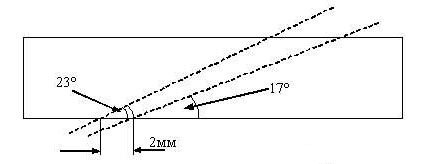
Let's look at the geometry of the Castmaster. Here, we need to take a metal rod and saw off fragments with given angles. The following metal rods are suitable: brass, copper, steel (preferably stainless steel). The diameter of the rods is 10-20mm (we can make Castmasters of different sizes).

We saw in a vice, with a hacksaw, a grinder, etc. tools. We process the resulting fragments with sandpaper and a grindstone. We remove burrs, chamfer, and round off. We drill holes. We polish the surfaces to a perfect shine or paint Castmaster with waterproof paints. That's it! Castmaster is ready and you can’t say that it’s any worse than the branded one from Acme. And the original, let me remind you, costs no less than $15. So, it’s not difficult to trace the benefits...
The second way to make Kastmaster with your own hands . Casting. We will cast Castmaster from lead or tin (if we want it a little lighter than lead). The question is in the form. Here we will also have to cut out a fragment, but not from a rod, but from a thin-walled metal tube. We attach the resulting cut to a metal plate (base) using a pair of wire clamps. The difficulty is to ensure that the shape fits tightly to the base. And the fact is that it must be placed at an angle so that the upper edge of the mold coincides with the horizontal plane and the lead does not spill out anywhere, but completely fills the mold. We cast lead Castmasters in this form. Then we process it with abrasives and bring it to the desired shape. We drill holes. Polish or paint. We equip it with winding rings and a tee. All!

The third way to make a Kastmaster spinner with your own hands is by casting in a plaster mold. We make a mold from plaster, like pouring eared ears, etc. The template is the branded Kastmaster (or any fake for it, they are also good). There are no tricks here, I think this method deserves attention.
Here, you’ve made some homemade Castmasters and go destroy the asps! Good luck!
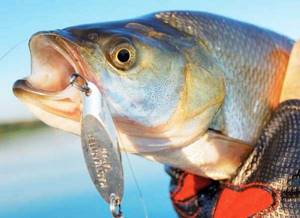
Share with your friends:
Category: Workshop
Tags: Spinner, Castmaster, Spinner, Workshop, Homemade products
Descriptions of the Kastmaster spinner
The Kastmaster winter spinner in a blister pack is no different from the summer spinner. Because these baits are universal, used both in winter and summer. Therefore, every angler should have a Kastmaster spinner in his kit.
Shape size and color
Castmaster sizes have a wide range. It all depends on the weight of the bait. Castmasters used to come in 7, 14, 21, 28 and 35 grams, but now start at 2.5 grams.
The shape of this bait is interesting - an obliquely cut cylinder. The main color is silver (due to the polished metal surfaces). But in the current market of fishing goods there are many color options for the castmaster, so even the most capricious fish can be matched with the key.
There are two holes in the bait. The first hole is made for attachment to monofilament fishing line or braided cord. Usually the kastmaster comes with a winding ring, which spinners remove immediately. This way you can avoid the annoying loss of the bait, and also slightly improve the wonderful aerodynamic properties.
A tee is attached to the other hole through the winding ring, which is also recommended to be immediately removed and replaced with a better and sharper one. Due to its stable action, the Kastmaster spinner is a catchable bait.
Game Features
Due to its streamlined shape, it is convenient to cast the bait over long distances, and its behavior in the water column remains unchanged at the same retrieve speed, regardless of the current. The play of the Castmaster spinner is very similar to the fluttering of a sick fish, and the light-reflecting color attracts a predator from afar.
Kastmaster from Acme are the creators of this class of lures, but they are not the only ones of their kind. There are many different copies that differ from the original in shape, color, game and overall catchability. But there are identical baits that exactly replicate the original. These are Condor spinners. Despite the lower price (almost 5 times cheaper than the original), they have the same stable play, and therefore the same catchability.
What kind of fish can be caught on kastmaster
Whether you're fishing with an Acme original or a Condor, these lures are designed to effectively catch predatory fish. And they do an excellent job with the task assigned to them. The Kastmaster was originally designed for bass fishing. But later they learned about these lures in Europe, where Kastmaster proved itself very well.
These spoons are excellent at catching pike, perch, pike perch, asp and even catfish! The Kastmaster spinner for pike should be a little larger, since the fish itself can reach 8 kg or more. The colors of the baits are different. It all depends on the water, weather and time of year. But the winter lure for perch is almost half that for pike, since sometimes you have to fish in so-called hard-to-reach places.
How to distinguish an original from a fake
Many beginners, having heard information about the miracle spinner from older comrades, immediately rush to check it through the global web. After reading reviews about the castmaster, where everyone praises it, they immediately get excited about the idea of buying such a bait for themselves.
We suggest you read: Hunting for elk in the fall: on the roar, from the approach, in the drive
And here there is a risk of buying not an original, but a well-made fake. For example, some foreign companies themselves have developed their own versions of similar baits.
And this is not to mention the well-made Chinese analogues that have begun to enter the international market. They are so well made that they even manage to carry the unique “Kastmaster Acme Tackle Co” engraving.
Their cost is several times less than the original, but the quality, and most importantly, catchability is many times inferior to a real castmaster.
Winding rings. On real products, the winding rings have an angular cut inward, but on a fake it is simply a right angle;
- Tees. The original spinners have a matte coating, because it protects them well from salt water. The hooks have a sharp end;
- Package. It is worth taking a closer look, as on fakes you can notice mistakes in the name, and the packaging itself may be wrinkled or askew;
- Dimensions. Small bait models (less than 7 grams) can only be in their original form. This is due to difficulties in manufacturing;
- Appearance. The American original has a perfect polish and is plated with high quality.
Tactics and fishing techniques
To begin with, it is worth noting that when fishing from the shore, the maximum effectiveness of the bait is revealed only when using the right gear. When fishing from the shore, a rod should preferably be 2.4-2.7 m, allowing for power casting over long distances. When fishing from a boat, a length of 1.8–2.1 m will be sufficient. Medium and hard spinning rods are best suited. It is better to use an inertia-free reel. There is no consensus on the equipment of the reel.
Some anglers use monofilament line or use braided line. As mentioned above, fishermen remove the winding rings from the bait because when using rings, swivels or carabiners, instead of a high-quality game, the spoon begins to “float” on one side. Because of this, the attractiveness to predators is lost. It is recommended to tie the lure to the main fishing line or cord in advance.
It is best to do this with a figure-eight knot; however, when using this method, the effect of “burning out” the line at the knot occurs, which is why you can lose both the treasured trophy and your favorite bait.
To avoid this, the lure for pike and other predatory fish is equipped with a tungsten leash, which is secured close to the bait with a loop-to-loop knot. A swivel is tied to the other end of the leash in the same way, and the length of the leash is 20-30 cm.
The tactics for catching a Kastmaster spinner are varied, depending on the place where you are fishing. The Kastmaster spinner can be fished throughout the entire reservoir, which is often done by spinners who want to quickly find fish that are actively hunting, as well as in local areas where predators live.
If you fish a large area, then the stability of the game, streamlined shape and weight will help you with this. Since, thanks to its streamlined shape, this bait flies much further than its competitors and does not sail, as does, for example, a “spinner” or a jig bait. You can try to look for a predator in the water column, at a depth of 3-5 m. Or try to look at the bottom. Everything will depend on the weather and pressure.
Fishing local spots brings more chances of a good catch. In summer, these are snagged areas, the boundaries of water and aquatic vegetation, or near fallen trees and beaver dams.
Main wiring
The main wiring of the Kastmaster spinner is to evenly twist the fishing line onto the reel spool (uniform wiring). This should be done neither quickly nor slowly. At the border of the spoon “falling” to the bottom. Take small pauses that will imitate a sick, tired fish falling to the bottom.
Often it is during such pauses that the bite occurs. You can also experiment with the depth of the drive, the frequency of pauses and jerks. Sometimes even the most unexpected decisions bring great results.
Wiring with a vertical component
Fishermen often use fishing rods with a vertical component. Undoubtedly, this is winter fishing, as well as “jigging” wiring (or in other words, stepped fishing). The essence of these postings does not change - the bait lies on the bottom, then two or three turns are made with the reel to tear the bait off the bottom. Then the bait, having traveled some distance in the water column, again sinks to the bottom. This fishing method is effective when the fish is lying on the bottom, as well as when there are a minimum of hooks on the bottom of the reservoir.
Also in the summer, the “winter” method of fishing is used. The fisherman either swims up to a snag or sunken tree and begins to gently “knock” the bait on the bottom. Due to its “cut” shape, the Kastmaster spoon does not fall vertically to the bottom, but makes complex movements in the water column, tempting a predator.
These lines are good at catching all types of predatory fish. But let's sort it anyway:
- Uniform wiring - mainly pike, as it waits for its prey in hiding. Less commonly, perch, asp.
- Step (jigging) - pike perch, pike and occasionally perch. Pike perch, as a rule, is caught on rivers and sticks to a rocky bottom, and on rivers it is best to catch with a jig bait.
- Vertical fishing (winter version) - perch, less often - pike.
Making castmaster spinners with your own hands
Many skilled fishermen want to save on the purchase of baits and make catchy working copies in artisanal conditions. The Kastmaster spinner is no exception.
Manufacturing methods
- Sawing down a metal rod.
- Metal casting.
- Casting in plaster mold.
For this method you will need: a vice, a metal rod and a hacksaw (or grinder). The rod is taken with a diameter of 10-20 millimeters, but you can choose a different diameter. It all depends on your preferences. The material of the rod can be different - iron, aluminum, copper, stainless steel.
However, remember that the bait will come into contact with water, and therefore ordinary iron will quickly rust. Aluminum and copper are susceptible to oxidation, so stainless steel is a good option because it does not corrode and has a metallic sheen.
We fix the rod in a vice and cut off the excess parts at an acute angle. Then we dull the sharp edges with a file so as not to cut ourselves and not to cut the fishing line in the future. We clean the treated surfaces with sandpaper.
After rough operations we polish our product. Along the edges of our spoon, holes are drilled for winding rings to attach the bait to the fishing line and attach the tee. The Kastmaster spinner is ready!
Metal casting
For this method you will need a metal tube. The material of the workpiece is basically not important. The shape is sawn off at sharp angles, which the spinner will acquire in the future. The difficulty is that the form must fit tightly to the surface on which the pouring will take place. After you have placed the form on the surface, start pouring.
Lead or tin are suitable for this. They have a good weight and are easy to handle. After pouring, the metal form is carefully sawed. If after pouring there are uneven surfaces and edges, file them. Then holes for the winding rings are also drilled, and the spoon itself is cleaned with sandpaper and polished (or painted).
Casting in plaster mold
The advantage of this method is that it is much easier to make the mold, because plaster is easier to process. The shape of the future spinner is “cut out” in plaster. This must be done carefully, since gypsum is a fragile material.
The inner surface where the material will be poured should be so smooth that after you break the mold, a minimum of irregularities remain on the surface of the spoon.
This will simplify the final finishing of the bait in the future. Once the mold is ready, start pouring. Lead or tin are also suitable for this. After pouring, the mold is broken, the edges and surfaces of the part are smoothed with a file, sandpaper, and holes are drilled along the edges.
Methods for making castmaster:
- Cutting out bait from a rod;
- Casting in a special mold;
- Casting in plaster mold
For the first method, you will need metal rods in which you need to saw off certain fragments with given angles. It is best to take rods made of brass, copper, stainless steel. Their diameter varies around 10-20 mm, depending on your wishes and needs.
The sawing process is carried out in a vice using a hacksaw, grinder or other tools. We process metal fragments well with sandpaper, and, if possible, with a grindstone.
Next, we drill holes, carefully polish the surface or paint the bait with waterproof paint. And in the end we get a high-quality castmaster, made with our own hands and with virtually no financial costs.
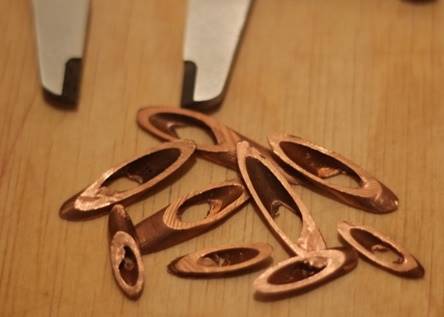
In the second manufacturing method, the castmaster is cast from a specific metal (lead or lighter tin). To give the bait the desired shape, you will need a thin-walled metal tube, from which a fragment will be cut. Next, the resulting cut is attached to a metal plate using several wire clamps.
The difficulty of this process is that the form must fit tightly to the base and be placed at an angle so that the upper edge coincides with the horizontal plane and liquid lead does not spill out.
At the end of this main manufacturing stage, we process it with abrasives and give the homemade bait its final shape.
Next, holes are drilled, the bait is painted or polished, and equipped with rings and a tee.
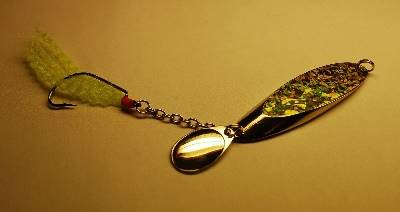
The latter method also involves casting, but in this case casting in a plaster mold. A branded castmaster or a worthy fake will serve as a template when making a mold. There are no particular difficulties when casting castmaster in a plaster mold, so this method also deserves the close attention of fishermen.
Description of the spinner
This artificial bait has a reputation among fishermen as one of the most successful when it comes to catching predators. It attracts the attention of such fish both when fishing with direct fast wiring and when used for fishing with jig wiring. It is useful both when fishing from the shore and when used for boat fishing. This spoon has excellent hydrodynamic parameters and high wear resistance. Such spoons are made of metal and usually have a galvanic coating.
The Castmaster spinner is available in five versions , differing in different weights, multiples of seven grams:
- weighing 7 grams;
- weighing 14 g;
- weighing 21 grams;
- weighing 28 grams;
- weighing 35 g.
The main part of this tackle is an elongated body, in the front part of which a winding ring is installed, and a triple hook is attached to the end of the spoon. The rod should be selected according to the results of the bait tests or, conversely, the bait should be purchased according to the rod test. When fishing from the shore of a reservoir, the most convenient length of a spinning rod will be slightly less than three meters. When fishing from a boat, you can limit yourself to a rod length of about two meters.
Types of spinners
This artificial bait has a reputation among fishermen as one of the most successful when it comes to catching predators.
It attracts the attention of such fish both when fishing with direct fast wiring and when used for fishing with jig wiring. It is useful both when fishing from the shore and when used for boat fishing. The Castmaster spinner is available in five versions, differing in different weights, multiples of seven grams:
- weighing 7 grams;
- weighing 14 g;
- weighing 21 grams;
- weighing 28 grams;
- weighing 35 g.
The main part of this tackle is an elongated body, in the front part of which a winding ring is installed, and a triple hook is attached to the end of the spoon. The rod should be selected according to the results of the bait tests or, conversely, the bait should be purchased according to the rod test. When fishing from the shore of a reservoir, the most convenient length of a spinning rod will be slightly less than three meters. When fishing from a boat, you can limit yourself to a rod length of about two meters.
The castmaster's photo does not always make it clear exactly what type of bait is depicted. To do this, it is better, of course, to come to the store and personally hold the product in your hands.
Why is that? Because this lure differs from each other in mass. There are only five types that increase by 7 grams:
- 7 grams;
- 14 grams;
- 21 grams;
- 28 grams;
- 35 grams.
Selection of reels and lines
Traditionally, anglers who prefer spinning fishing opt for spinning reels. They are very convenient for this method of fishing and are well suited for long casts, which is especially important when fishing from the shore. A heavy spoon such as Kastmaster will also help to maximize your casting distance. For a three-meter-long spinning rod, a two-thousandth reel will be quite sufficient, but a spinning rod with a longer length will have to be equipped with a three-thousandth reel. And if in the first case a fishing line with a thickness of 0.2 millimeters is suitable, then in the second you will have to opt for a fishing line with a thickness of 0.25 millimeters.
For good visibility, the best solution would be to give preference to a forest with a brighter color. You will need to wind at least one hundred meters of such fishing line onto the reel core. Moreover, you should choose a fishing line that is soft, high quality and without shape memory. This approach will make it possible to get the longest casts of the spinner.
Making your own gear
To make a Kastmaster with your own hands, you will have to look for drawings. The geometric shape of such a spinner is not particularly complex, although it should be manufactured with special precision, which will provide it with a characteristic game. Therefore, attempts to make such a spinner yourself, at home, will not be fruitless. There are three common ways to make a Castmaster:
- using rolled metal products;
- casting in plaster mold;
- hot casting using a special mold.
From metal products
In order to make a Castmaster spinner in this way, you will need a thick metal rod with a diameter of twelve to twenty-four millimeters. The workpiece material can be stainless steel, copper or brass. The rod should be secured in a vice, and then cut at an angle of seventeen degrees. One trim can be set aside. From the second cut we again saw off a part at the same angle (that is, you only need to make two parallel cuts). The resulting piece of metal will become the main part of the future gear.
Now the workpiece should be carefully processed using a file and sandpaper to smooth out all the corners and irregularities. After this, you need to make two holes in the spoon: front and back. Winding rings will be fixed in them, on one of which a tee is hung. The last stage of work is painting. The lure must be coated with waterproof paint. The result will be a homemade Castmaster, very close in its properties to the factory one.
Plaster casting
To make a Castmaster using the second method, a completely different sequence of actions will be required. This path will require much less labor, but will still allow you to get a spinner in shape that is closest to the original one. To work, you will need a Kastmaster store-bought spoon and a not very voluminous vessel into which you will need to pour liquid gypsum. After pouring, take the original spoon and press it into the gypsum mass to half its thickness. At this stage of the manufacturing process, care must be taken to ensure that the second layer of plaster does not adhere to the dried first one. After this, you can pour the second layer.
When the gypsum solution has hardened, you can carefully remove the top layer of the plaster mold and remove the original spoon. Then you need to connect both parts of the mold again and carefully drill two holes: one for pouring metal, and the second for air outlet. Further actions will be the same as with the first method. In the cooled spoon, the winding rings and hook are fixed, and the body is covered with paint.
Hot casting
To make a spinner using the third method, casting is also used, but the shape of the casting will no longer be plaster, but metal. A piece of steel pipe with a diameter of about one and a half centimeters will come in handy here. From it you need to cut a blank for casting, in appearance as close as possible to the shape of the spoon. The resulting workpiece is then attached to a metal plate using steel wire. It is extremely important to ensure a tight, gap-free fit of the plate to the workpiece cut from the pipe.
Now you can pour molten lead or solder into the resulting mold. After the casting has cooled, two holes are made in it at the ends, and the spoon itself is filed and polished to remove casting defects. Now you can coat the product with waterproof paint.
How to make a castmaster with your own hands?
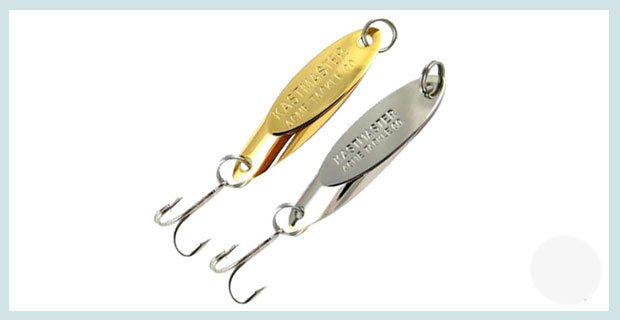
If you look at the standard form of a castmaster, you can be convinced that he does not represent anything supernatural. And to make it you just need your hands in the right place and a couple of locksmith tricks.
Manufacturing methods
Typically, there are 3 types of do-it-yourself spinners:
- Manufactured using metal wire;
- Plaster mold;
- And summer in special. form.
What will you need?
- For the first method we will need wire with a diameter of 12-24 mm. Use metal rods: stainless steel, brass and copper.
We clamp the wire in a vice, first cut off the first piece at an angle of 17 degrees, throw it away, then cut another piece at the same angle, and this will be a spinner. You can cut with either a grinder or a regular hand hacksaw. Then we take this piece and make a small hole in it. Then use a grindstone and sandpaper to remove all the burrs and round the lure. I advise you to paint the spoon with waterproof paint after all the procedures. That's all! A couple of minutes of work and from the usual piece you will get a good spoon, comparable to the castmaster from Acme.
- The second method, I think, is even easier.
Just take the original castmaster, it will serve as the basis for the rest. Then take a container, fill it with gypsum, put the spoon and more gypsum on top. At the end, you simply make a pouring pass to make a spinner.
How to catch more fish?
- The third method is also no different in ease from the others; it is based on casting.
You need to take a metal tube and cut a spinner shape from it. After preparing the mold, we attach it to a metal plate with two rods. The difficulty arises here only in the tight fit of the spinner mold to the plate. Now the question is what to make the spinner out of, lead or tin. Here you can only base it on weight; if you want something lighter, take tin; if you want something heavier, take lead. After pouring, we simply make a hole in the spoon, polish it from burrs, round it and paint it with waterproof paint.
Fish to catch and game features
Any predatory fish will bite well on a spoon of this type if played correctly. This is due to the fact that when moving in the water column, Kastmaster outwardly imitates the movements of fry, and not a single predator will pass by such easy prey. These spoons are most often used for fishing:
- asp;
- pike perch;
- perch;
- pike;
- chub.
The only difference here is what weight of spinner to use and the methods of play.
Such a spinner is characterized by strong play in all bodies of water, even with weak currents or its complete absence. Despite its considerable weight, this tackle will always return to the shore without any problems, especially when using fast retrieval. Because of this feature, its use becomes possible both when fishing in shallow reservoirs and in deep ones. Despite the high activity of the Castmaster's game, much depends on the experience and skills of the fisherman. The most successful fishing will be with a fisherman who knows the preferences of a particular type of fish. It is worth noting that such a spinner strongly attracts predators, both with slow and fast retrieves.
Predator fishing area
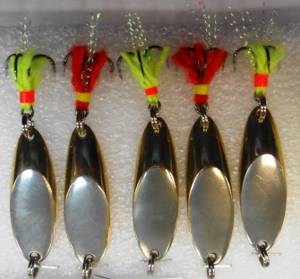
Getting a decent result while fishing depends on the correct choice of fishing location. Significant amounts of predatory fish prefer to stand on the rifts, and in addition, in those places where there are depressions at the bottom of the reservoir. It is preferable to cast the Castmaster spinner on rivers and reel it in, maintaining a certain angle to the current. If there is no current, casting can be done to any point. Based on the speed of the current, the weight of the spoon is selected: for faster rivers, baits of larger weight are suitable. The heaviest of them can be thrown up to a distance of hundreds of meters.
The weight of the spoon you should use for fishing depends on the type of reservoir and what kind of fish is the desired trophy. For example, when fishing for perch, a spinner weighing from seven to fourteen grams is quite enough. The same Castmaster can also be used for catching asp, since this fish prefers to hunt fry of other species. But for catching pike, especially if you want to take a trophy, it is better to use heavier baits complete with a leash.
Wiring technique
Stepped wiring . The first fall of the spoon is considered the first stage of the retrieve. After freely immersing the spinner to the required depth, or even to the bottom of the reservoir, you should make two or three turns of the reel, as a result of which the tackle will rise to a height of about two meters from the bottom. If it is necessary for it to rise into the middle layers of water, then the reel needs to be turned five to seven times. As the reel speed increases, the spinner will reach the surface layer of water. After completing the rise of the bait to the required height, it must be allowed to sink back into the bottom layers of water.
Bites can occur both during the rise of the Castmaster and during the stage of its free dive. The bite will be transmitted through the fishing line to the tip of the spinning rod. In this case, the fishing line can become very tight and even bend the rod. However, you should always remember that there is an opportunity, therefore, you should not force the hook too much. This technique of playing with bait is suitable for reservoirs with sufficient depth.
Posting by jumps . Imitates the behavior of a fish that digs in the ground in search of food. The spoon should be cast far enough, and after immersing it to the very bottom of the reservoir, it is lifted from the bottom by lifting the spinning rod. At the highest point of lifting the spinner, you need to pause, after which the spinning rod is lowered to its original position. Then there is a pause again and winding the line onto the reel. The full cycle ends and must be repeated.
Usually, with this method of play, bites most often occur during a pause. Taking the bait is clearly felt with your hands and can be seen by the bend of the tip of the spinning rod. This wiring method is applicable for reservoirs with a depth exceeding one meter.
Uniform wiring . The simplest and most accessible method of fishing for a beginner, which can be mastered at the initial stages of learning the technique of fishing using a spinning rod. The main task is to learn how to wind the fishing line evenly and smoothly onto the reel core. Uniform wiring is applicable on reservoirs with any depth and current strength.
Combined wiring . This method of retrieving is a combination of various spinning techniques taken from simple retrieving techniques, for example, step or jumping retrieving, as well as even winding of the fishing line. Its advantage is that it makes it possible, during the entire winding process, to arbitrarily change the speed of movement of the bait, the duration of pauses and the work of the rod. You should start mastering this technique after studying the basic types of fishing and the fisherman has the necessary experience. So, it can be argued that the combined fishing method is more suitable for fishermen with extensive experience.
Typically, anglers start fishing reservoirs using the simplest types of fishing. Short distance casts follow first. After fishing places close to the shore, the spinner begins to gradually increase the casting distance and moves on to using more advanced fishing techniques. You should not throw the bait strictly at one point repeatedly. Fishing one place requires five to seven trips, after which you can change the current position to a more promising one. This lure can be used at any time of the year (for example, a winter castmaster).
Homemade "Kastmaster" with your own hands
This spinning bait is good for catching asp and other predators. You can easily make it yourself, with your own hands (fishermen know that prices for any acceptable spoons start at 200 rubles) from a non-ferrous metal tube.
Wrapping it in sandpaper (to prevent it from scrolling), we clamp the brass tube, with an internal diameter of 16 mm and a wall thickness of 1 mm, in a vice. At an angle of 20 degrees, we cut it (Fig. 3), clean the cut, remove burrs. Having retreated 4-8 mm from the edge, at the same angle we successively cut off several pieces of different widths, processing the cut in between. We obtain shells for baits of different weights, which are useful in different fishing conditions.
After cleaning, we cover the end and inner surfaces of the tubes with solder. We cut out plates from sheet brass 0.3-0.5 mm - 1.5 mm wider than the oval contour of the sections. We also apply solder on one side. Place the workpiece on the tinned surface of the cheek, then use a more powerful soldering iron (80-100 W) to melt the solder inside, then cover it with the second cheek and press it with a wooden block.
After the solder has cooled, we process the surface of the bait with a file, drill two holes along the edges for the winding rings, sand it with sandpaper and polish it.
If the cheeks are made of bronze, copper or even stainless steel, the castmasters will turn out colored.
Personally, I attach tees with a bunch of bright red threads to homemade baits.
How to make a beacon for bait
When fishing on a lake, it is best to position the boat downwind. And when changing its direction, it is important to place it in a new place so that it is convenient to throw fishing rods into an already baited place. In clear water, without visible landmarks, a special buoy helps me mark it.
We make the anchor weight (cylinder A) from a capacitor type K 50-6 (K 50-16, K 50-35). Having freed the aluminum cup, we melt the solder inside with a soldering iron to the very edges and fix the wire ring in it.
From a piece of dense foam plastic we cut out a cylinder L with a width of 2 and a height of 2.5 times greater than A. We drill a hole in L 1 -1.5 mm less than d A to a depth equal to the height A. Using the shank of the same drill, we seal the hole in L until A is free to move in and out of it.
Using a semicircular file, we make a shallow groove along the entire perimeter of L (Fig. 3). Round the edges and paint them yellow. After the paint has dried, thread a fishing line 2.5-0.3 mm thick into a sewing needle, pierce the P right through and tie the ends. At the same time, make sure that the fishing line does not pass through the hole for A.
Having measured 2.5-3 m of fishing line, we tie a weight to it and wrap it around the foam. At the end L we make cuts with a knife into which we pinch the fishing line and place the load inside. On the buoy we write down the maximum depth for which it is designed.
To indicate the baited area, measure the fishing line to a length corresponding to its depth, add 20-30 cm (for safety), and then pinch the fishing line in the cuts. We wind the fishing line around the buoy, place the weight inside and throw it onto the floats. When dropped into the water, the weight falls out and the fishing line unwinds to the set depth.

Drawings: 1. Homemade bite alarm. 2. Beacon for baited meta. 3. Homemade spinner – “castmaster”
On a note
To prevent the load from falling out before it hits the water, you need to throw the buoy, holding it between your thumb and forefinger with the hole facing up.
Yellow paint makes the “beacon” visible in any weather. When fishing, it is advisable to have as many of them as you want to feed them in.
Author: E.Vinnikov
TOOLS FOR CRAFTSMAN AND CRAFTSMAN, AND HOUSEHOLD GOODS VERY CHEAP. FREE SHIPPING. THERE ARE REVIEWS.
Below are other entries on the topic “How to do it yourself - for a homeowner!”
- Do-it-yourself floats (photo) - better than store-bought ones How to make floats with your own hands...
- How to untangle a fishing line and wind it onto a reel - two convenient devices. TACKLE FOR A FISHING LINE IS SURE EVERY FISHERMAN…
- DIY hanging table - master class (photo) How to make a hanging table with your own...
- Do-it-yourself fruit picker for cherries How to make a convenient fruit picker for…
- Christmas tree toy ball – DIY decor: master class How to make a Christmas tree toy -…
- DIY rope rug How to make a rug with your own hands...
- DIY earrings - photo How to make earrings with your own hands...
Subscribe to updates in our groups and share.
Let's be friends!
With your own hands › Simple and complex crafts › Homemade bite alarm, Castmaster spinner and beacon for bait with your own hands
